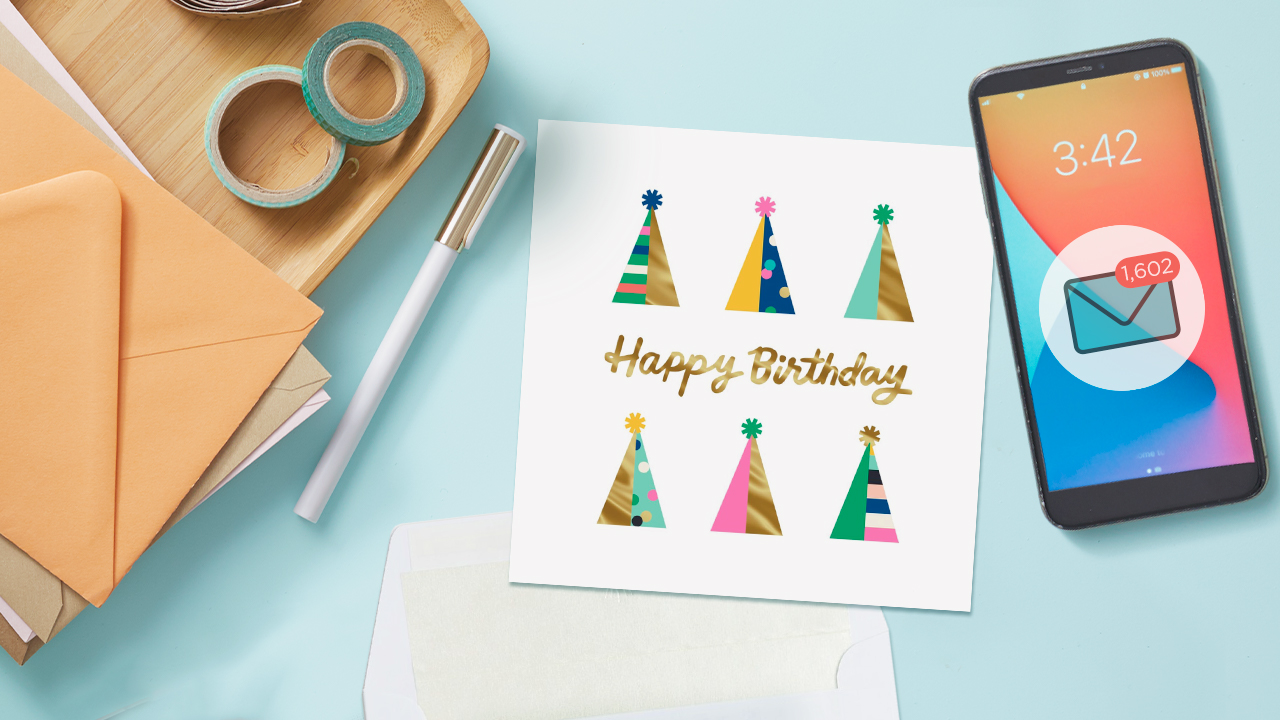Millennials Aren't Always About the Digital Experience. That's Good News for Your Marketing Department.

*Originally posted on entrepreneur.com.
It turns out that millennials’ digital-first reputation might be getting misinterpreted. And that could be a very good thing for your business’s marketing department.
As a generational cohort, the majority of millennials are at the height of their consumption power, according to Morgan Stanley. This makes them a natural target for advertising campaigns. Yet the best way to grab a millennial’s attention isn’t necessarily through emails or texts. Instead, it might be via a greeting card delivered the old-fashioned way.
The power of direct mail on millennials
Why use greeting cards as part of your millennial-focused marketing campaigns? Society hasn’t lost its passion for sending sentimental warmth and goodwill in bright, cheery envelopes. Each year, consumers purchase more than 6 billion cards. Millennials spend more on those cards than any other generation, including baby boomers. In other words, they go offline when the moment counts.
This is critical information, particularly if you want to make sure your business survives to celebrate its 10th year in business. Only 30% of startups can expect to reach that milestone. Consequently, if you want to buck the trend, you need to consider your marketing mediums. Certainly, you’ll always want to focus on digital strategies. However, it’s worth testing the greeting card waters.
One of the most attractive perks to baking offline marketing into your online practices is that physical mailboxes are far less cluttered than their digital counterparts. According to the United States Postal Service, the average household gets 454 pieces of mail annually. By contrast, Tech Jury research suggests most consumers can expect 120 emails to land in their inboxes daily. In other words, the odds of someone opening an unsolicited card are much higher than of the same person scouring an email.
Greeting cards don’t just cut through the marketing noise, though. They also reinforce your relationship with customers. By their very nature, greeting cards tend to be exchanged among loved ones and friends. When your company sends a personalized card in the mail, you’re fostering a different connection with the buyer. For example, you might remember a customer’s anniversary with your organization with a card or mail cards around the end-of-year holidays.
Here’s the bottom line: millennials show tremendous openness toward direct mail. Therefore, you’re in a position to grow your business by embracing greeting card marketing. Below are a few suggestions to get started.
Have a good grasp of your brand.
Done well, direct mail card marketing becomes an extension of your brand’s personality. Of course, you have to know what your company’s about to make every message count. Otherwise, your creativity won't connect with the customer. For example, some brands are more serious than others. Sending a silly direct mail piece may not make sense for a stoic brand.
Wondering how to pin down the character of your brand? Explore other companies that have positioned themselves successfully, like Airbnb. The tourist industry leader embodies the spirit of freedom and exploration. From one-of-a-kind experiences to inspirational guest and host stories, Airbnb’s content encapsulates its carefully crafted image. By knowing the core essence of your “why,” you can forge similar emotional connections with your millennial direct mail recipients.
Define your customers' preferred tone.
Want loyalty from millennials? Adopt a customer-centric attitude toward direct-mail advertising and avoid sugarcoating your image. Eighty-four percent of Millennials said they favored brands that showed authenticity. When you’re sending direct mail, you’ll want to reflect not just the highlights of your brand but what your Millennial base deserves to hear and know.
Patagonia is excellent at uber-forthright, customer-driven marketing. The company has never been shy about its commitment to sustainability. Yet its marketing remains refreshingly humble and ambitious. Once, Patagonia cautioned buyers not to buy a product it was selling. Why? The product’s manufacturing process impacted the earth in an unhealthy way. In other words, Patagonia focused on building trust with consumers by being honest with them in the language they need to hear. That's a bold branding move you can replicate.
Rely on direct mail to drive digital exchanges.
Direct mail may seem like an isolated offline silo, but it can be woven into a solid digital marketing plan. How can you make the offline-online relationship as seamless as possible? Use technology to customize everything from the greeting card copy to the landing page. It’s now possible to drill down in terms of putting customers into micro-targeted “audience buckets” and construct creative specifically for each bucket. This is what Thinx did with its direct mail pieces that held specific calls to action for multiple members of a given household.
Another possibility would be to include a QR code on a small insert in a millennial customer’s greeting card. The customer can use a smartphone to scan the QR code and get to a landing page. Once at the landing page, the customer can be directed to take other actions.
Measure your direct mail to mold its future cadence.
Currently, Valassis suggests that about 7 in 10 buyers are revisiting direct mail ads. Why? They know that direct mail content tends to tout significant sales and special discounts, especially at local companies. These are exciting numbers, but they won’t make a difference if you aren’t putting measurement methods in place.
Measuring the impact of your greeting card marketing doesn’t have to be complicated. If you send millennial consumers to a website or survey, you can gauge how many take you up on your offer. On the other hand, if your direct mail campaign revolves around brand awareness, you may want to see if you have a corresponding increase in social media followers or corporate hashtag usage. Just make sure that you put measures in place to learn what works.
Building relationships with millennial consumers doesn’t always mean meeting them in a virtual space. Sometimes, the best way to turn them from mere buyers to world-class cheerleaders is by sending an unexpected hello through their physical mailbox.
In this Article
-
The power of direct mail on millennials
-
Have a good grasp of your brand.
-
Define your customers' preferred tone.
-
Rely on direct mail to drive digital exchanges.
-
Measure your direct mail to mold its future cadence.
Similar Articles




